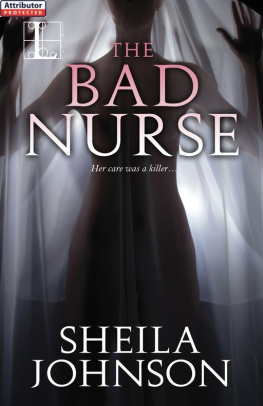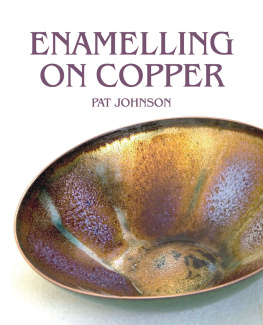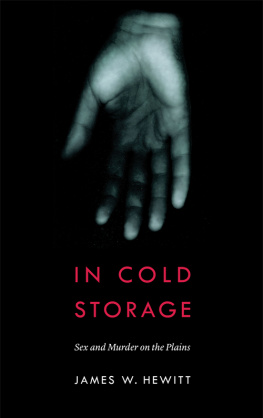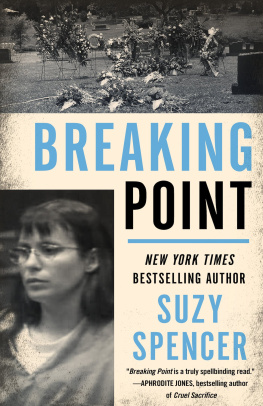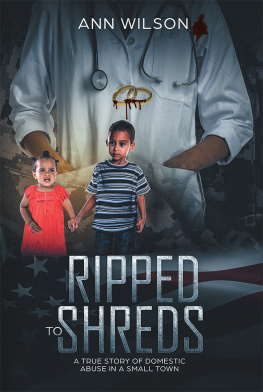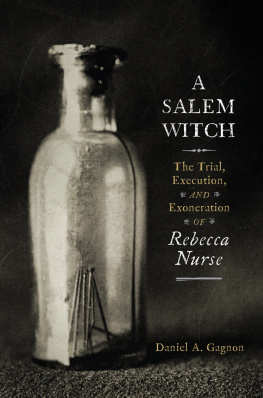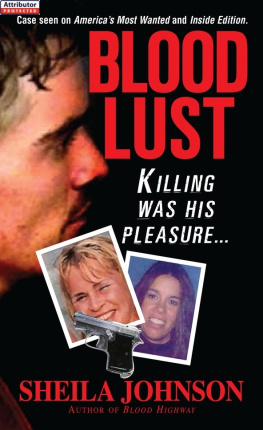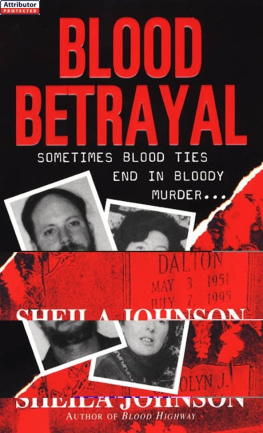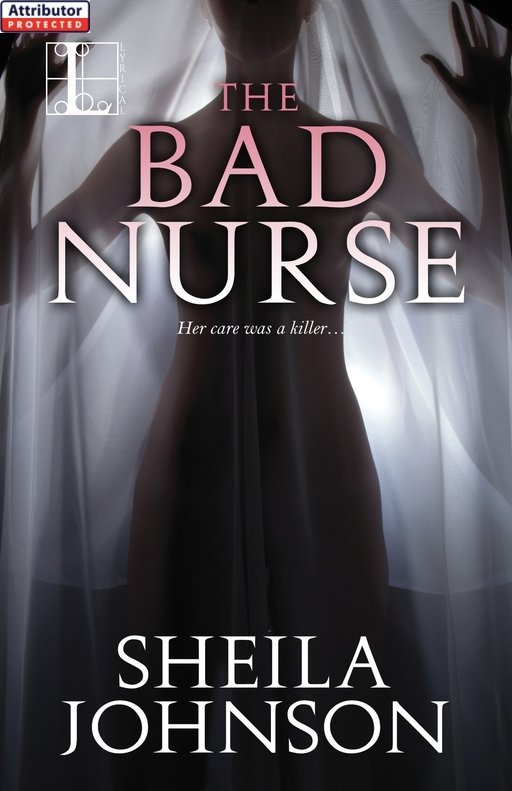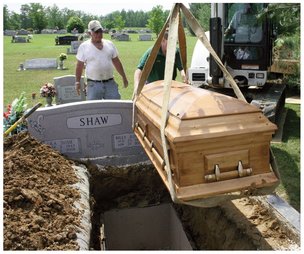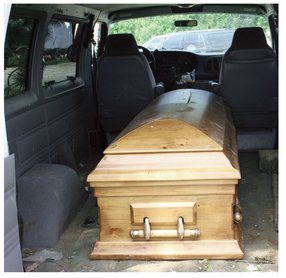ACKNOWLEDGMENTS
Thanks for the assistance and cooperation of the DeKalb County Sheriffs Department and Investigator Wade Hill; the DeKalb County District Attorneys Office, DA Mike ODell, and DDA Bob Johnston; Circuit Clerk Pam Simpson and her staff; and Circuit Judge Randall Cole. These people have been supportive and helpful for years, and I appreciate their trust more than I can say.
Other Books by Sheila Johnson
Blood Lust
Blood Highway
Blood Ambush
Blood Betrayal
Dead of Night (with Gary C. King)
ABOUT THE AUTHOR
Sheila Johnson is the author of Blood Lust , Blood Highway , Blood Ambush , and Blood Betrayal and the coauthor (with Gary C. King) of Dead of Night. Her experience as a newspaper crime reporter created a natural transition into writing true-crime books about some of the cases she covered, as well as the killers and victims she came to know. Her close working relationship with law enforcement has given her inside access to statements, case files, and testimony that she uses to create a clear overall picture of murderers and their victims, defense attorneys and prosecutors, and the dedicated investigators who work tirelessly to bring killers to justice. She lives outside Birmingham, Alabama.
CHAPTER 1
I n the little town of Ider, in DeKalb County, Alabama, the residents usually know all there is to know about their friends and neighbors. There arent that many secrets that remain a secret for long in most rural small towns in the South, and gossip isnt considered an invasion of privacy or even bad manners. It is simply thought of as passing along interesting information.
Billy Junior Shaw, the owner of Shaw Saddlery, was an expert saddle maker and prominent businessman. He was a valued member of the community, known and liked very much throughout the area. When Karri Willoughby, one of his stepdaughters and a nurse, found him dead in his home on April 22, 2008, people were saddened but not completely surprised to hear of his passing. His wife, Lila Susie Shaw, had died only twenty-two days earlier, on April 1, and many of those who knew the couple assumed that his death might have been linked to his grief over her passing.
Karri Willoughby told the emergency personnel who responded to her distraught 911 call that she had stopped by to check on her stepfather on the way home from her job at the Chattanooga Surgery Center in Tennessee. She had found him inside his home, unresponsive.
During the customary investigation that followed Shaws passing, the coroner ruled that his unattended death had been caused by a heart attack. Family and friends believed that depression due to the loss of his wife had most likely been a contributing factor in Shaws sudden collapse. They took comfort in their faith that the two had been reunited again and were now resting beside one another in the Fuller Cemetery.
As was standard procedure in almost all unattended deaths, samples of Shaws blood and urine had been taken by the coroner and sent to the state forensic laboratory in Huntsville, Alabama, for testing. Results of the tests were not expected for quite some time, due to a huge backlog of cases at the laboratory. The test results would likely be routine, law enforcement assumed, confirming the coroners preliminary finding of a heart attack being the probable cause of Shaws death.
Over six months later, DeKalb County sheriff Jimmy Harris was shocked when he opened his mail one morning to find a most unexpected toxicology report from the Huntsville laboratory. An investigation into Shaws death was immediately started. Despite the death having initially been ruled a heart attack, Sheriff Harris and his investigators had just received confirmation from the forensic lab that Billy Junior Shaw had been murdered.
CHAPTER 2
I nitially no one outside law enforcement and the district attorneys office knew about the receipt of the unexpected results of the toxicology report, or why there was a sudden renewal of interest in the cause of Billy Shaws death. But as the authorities launched the investigation, information gradually leaked about the case. Whispered rumors about the circumstances of the death soon began to circulate in the community.
As those rumors gradually increased, they provided the sheriff with some surprising new information. It seemed that there were several stories making the rounds about one of Shaws two stepdaughters who had filed for bankruptcy more than once, and who had ongoing serious financial problems.
The authorities learned that prior to Shaws death, the woman had been caught on multiple occasions withdrawing funds from the bank account of her stepfathers saddlery business. She also had been stealing the identity of her mother, applying for credit cards in her mothers name, and taking money from her mothers bank account by forging Mrs. Shaws name on several large checks.
Billy Shaws exhumation was ordered after toxicology results revealed he had been injected with propofol.
This stepdaughter, Karri Willoughby, was, coincidentally, the same person who had reported that she had arrived at Billy Shaws home, found him unresponsive, and had placed the call to 911 for help. When making a statement during the initial investigation, the 911 operator had recalled advising Karri to begin CPR, continuing until the paramedics reached Shaws home.
But when questioned later, after the toxicology results were received, the paramedics who responded to Shaws residence on the day of his death remembered that they had thought it strange at the time that there was no indication that CPR had been performed on Shaw. They had assumed that since she was a nurse, CPR should have been the first thing that Karri would have done, but that was not the case.
The casket, loaded and ready for transport to the Alabama Department of Forensic Sciences Laboratory at Huntsville.
The whispers about Billy Junior Shaws death were beginning to build in volume. When it became public knowledge that Sheriff Harris had obtained an exhumation order to remove Shaws body from his grave in the Fuller Cemetery, the rumors began to fly in earnest. Harris and his officers had been attempting to keep a tight lid on their reasons for the exhumation and the renewed homicide investigation, but speculation in the community ran wild. It was, after all, the first exhumation in DeKalb County for over thirty years.
CHAPTER 3
O n May 13, 2009, more than a year after his burial, the remains of Billy Junior Shaw were removed from the Fuller Cemetery in Ider and taken to the forensic lab in Huntsville for a full autopsy. Harris remained very tight-lipped about the homicide investigation, telling the press that he did not know when to expect results from the autopsy. Additionally, he explained, at the time of Shaws death, his department had not been aware of the possibility of any foul play being involved. There had been no indication at the scene that caused any suspicion. Harris did say, however, that the sheriffs department and the district attorneys office had been working in cooperation on the case and hoped to make an arrest soon.

